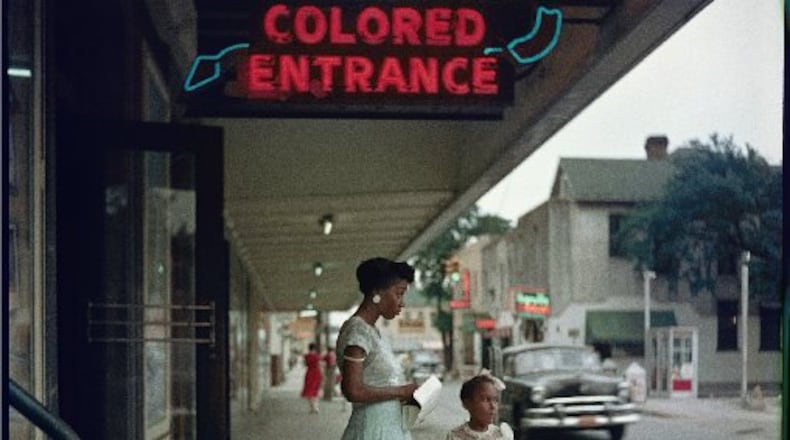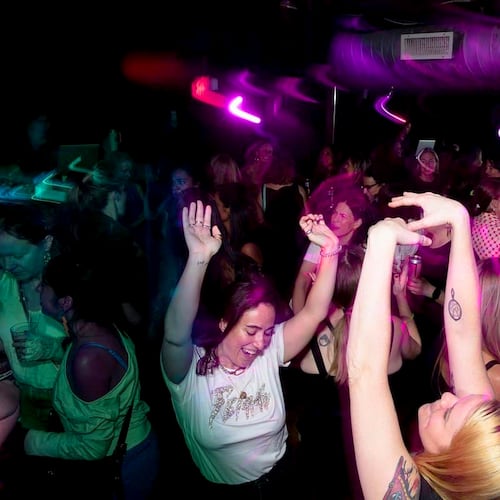"Gordon Parks: Segregation Story" and "Leonard Freed: Black in White America," photography exhibitions opening Nov. 15 at the High Museum of Art, are, in different ways, potent chronicles of segregation in the U.S.
The exhibits have more in common than that, however. They also are prime examples of a different form of documentary photography that was starting to gain popularity in midcentury America as newsmagazines such as Life and Look published stories propelled more by pictures than words.
Life’s first African-American photographer, Parks shot the 40 color pictures that comprise his exhibit for a 1956 photo essay for the magazine, “The Restraints: Open and Hidden.” The 12-page, 26-image spread portrayed an extended family going about daily life in Alabama.
Credit: hpousner
Credit: hpousner
While Parks took his pictures in vibrant, attention-grabbing color that was unique then in depictions of the civil rights movement, Freed documented a variety of segregated tableaux in black and white from 1963 to 1966. Ranging from rural Southern scenes to life on the streets of New York, with the occasional picture from one of the Rev. Martin Luther King Jr.'s campaigns included, too, Freed's project resulted in the 1968 book with the title the High has borrowed for its 38-print exhibit.
High photography curator Brett Abbott noted that the images in both exhibits form a counterpoint to many of those in the museum’s noted civil rights photography collection that focus on important people or events associated with the movement.
“It’s a form of documentary photography that was really about photographing everyday people — showing their humanity, building a kind of empathy around them, and using the camera as a weapon for social change,” Abbott said of Parks’ project when the High announced the exhibit earlier this year. (Though the same applies to Freed’s “Black in White America,” which the museum only recently added as a complement to Parks’ show.)
“That was very different from pictures that recorded just the kind of newsworthy moments of the movement. It’s an important balance to show the other approach to photography.”
Parks, he said, “built a case (against) the inhumanity of the segregated South” in a subtle way.
Credit: hpousner
Credit: hpousner
While the project of Freed, the Brooklyn-raised son of working-class Jewish parents of Eastern European descent, is one of the enduring visual records of American race relations in the waning days of Jim Crow laws, Parks’ essay had become a civil rights footnote over the decades since.
Until recently, these time capsules were presumed lost. Then, more than 200 transparencies, wrapped in paper and masking tape and labeled “Segregation Series,” were discovered in a storage box being cataloged at Purchase College/State University of New York, where Parks’ archive moved five years ago.
“To think that you just don’t have that many pictures of segregation in the South in color from the ’50s and here (they find) this one really incredible trove by one of the 20th century’s best documentary photographers,” Abbott said. “It’s just kind of an amazing thing to come across.”
Parks’ essay captured day-to-day activities of the related Thornton, Causey and Tanner clans in Mobile and Shady Grove, Ala. Family members are shown attending church services, ordering ice cream, enjoying family gatherings, doing farm work and getting at-home haircuts.
There is a warm and cozy 1950s normalcy about the routines that Parks documented, except for the obvious barriers of social exclusion —- from a movie theater’s red-lettered “COLORED ENTRANCE” neon sign under which two family members pause to the chain-link fence that six children press against, staring at an off-limits playground and carnival ride.
In one of the more quietly provocative images, a grandmother embraces her granddaughter as she peers from outside a clothing store into windows filled with white child mannequins clad in the season’s fashions.
Abbott believes Parks, known for his own potent black-and-white work, made a determined choice to shoot “The Restraints: Open and Hidden” in color.
“Photographers around this time were learning that aesthetic power and beauty in documentary photography could actually be a very powerful means of grabbing someone’s attention,” Abbott said. Then, the “dissonance of something beautiful and something disturbing” could exert its power.
The High is acquiring 12 of the “Segregation Story” color prints for its permanent collection.
About the Author
The Latest
Featured



